Learn what terms like DOS, Saponification, Superfat, and Trace mean in the second episode of my Cold Process Soapmaking series. In this episode, I show examples and carefully explain the mysterious world of CP soap with a live demonstration of trace and a visual explanaition of saponification and superfat. Cold Process Soap making is both a science and an art; learn about it all with my in-depth Cold Process Soapmaking Series.
How to Make Cold Process Soap: Basic Terms, Episode 2 from Soap Queen on Vimeo.
In future episodes I will explain how to use fragrances and colorants. After watching the first 4 episodes of my ‘How to Make Cold Process’ series you will be prepared to make your first successful and safe batch of soap! Can’t wait? Check out the Cold Process DVD I made here.
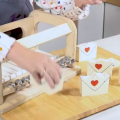
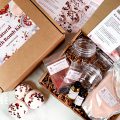
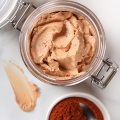
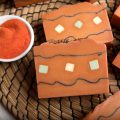
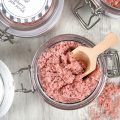
Can you give a basic tutorial on making tallow soap?
Great news, it’s the same exact concept – just with different oils. Head to BrambleBerry.com for the lye calculator to figure out your recipe and then make your soap – making sure you’re fully geared up with safety equipment =)
Dear Anne-Marie,
If you are soaping using a water discount, does your soap still have to sit the 4 to 6 weeks? Quite often we do some recipes that we do using a 50% water discount. So would this still have to sit for the 4-6 weeks?
That is a fantastic question. If you do that much of a water discount, since much of the 4-6 weeks is actually for drying time, you would be able to decrease your cure time to 3-4 weeks. Kevin Dunn, from Caveman Chemistry, mentioned a few years back at a Soap Guild show that 98% of the saponification reaction was done in the first 30 minutes of the soapmaking process and that the main point of the cure time was for drying.
Question…..Gel phase….not a big deal then? How can I avoid having my soap go through gel phase??
Mix at lower temperatures and that will solve any gel phase issue – or you can toss the soap in the fridge the second you make it and that will also stop gel phase.
Hi,
I love you videos, they are awesome. Please explain what “Low Sweat” soap or “Like Cold Process” Soap means?
I look forward to seeing more videos,
Sherene
Those are different types of Bramble Berry Melt and Pour bases: https://www.brambleberry.com/Bramble-Berry-Bases-C11.aspx They’re just less prone to sweating in humid environments.
This is a great video! Thanks for doing this!
Yay! I have been WAITING for the next episode! Glad it’s here! And, as usual, you did awesome with it! So informing. I’m trying to decide on whether to just order my supplies and go or watch 1st then go!
Can’t wait to go home and watch this!!